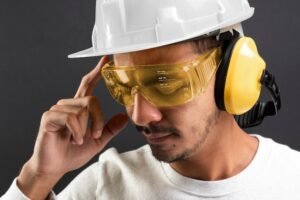
Solar Repair installation for residential purposes involves several key steps, ensuring a seamless transition to renewable energy. The process typically begins with preliminary assessments and ends with the activation of a functional solar power system.
Consultation and Assessment
The journey commences with an initial consultation between the homeowner and a solar panel installation company or contractor. During this phase, experts evaluate the property to determine its solar viability. Factors like roof orientation, shading, and available space are thoroughly assessed to ascertain the feasibility of installing solar panels.
Design and Permitting
Once the assessment is complete and solar viability confirmed, the design phase begins. Engineers create a tailored solar panel layout, optimizing the system’s efficiency while adhering to local regulations. Concurrently, necessary permits and approvals are obtained from local authorities, ensuring compliance with building codes and regulations.
Procurement and Equipment Installation
With permits secured, the installation company procures the requisite solar panels, inverters, racking, and other necessary equipment. Installation typically commences with the placement of racking systems on the roof. Panels are then mounted onto these racks, securely fastened to withstand environmental elements.
Electrical Wiring and Connection
Following the physical installation of solar panels, electrical components such as inverters, meters, and wiring are connected. A certified electrician ensures the safe and efficient wiring of the solar panels to the household electrical system, allowing for the seamless transfer of generated solar energy.
Inspection and Activation
Post-installation, a comprehensive inspection is conducted to verify the system’s compliance with local regulations and safety standards. Once approved, the system is activated, and the homeowner can start benefiting from solar-generated electricity.
Residential Solar Repair
While solar panels are designed to be durable, occasional maintenance or repair may be required to ensure optimal performance. Some common issues that might necessitate repair include:
Panel Damage:
Damage caused by severe weather conditions or debris might require panel replacement or repair.
Inverter Malfunctions: Inverters are crucial components; malfunctions could disrupt energy conversion. Replacements or repairs may be necessary.
Wiring or Connection Issues:
Faulty wiring or connections can impede energy transfer. Professional assessment and repairs are needed in such cases.
To address these issues, homeowners should promptly contact certified solar panel repair professionals. Regular maintenance, including cleaning panels and checking connections, can help prevent potential problems and prolong the system’s lifespan.
In conclusion, the process of residential solar panel installation involves meticulous planning, precise execution, and adherence to safety standards. Regular maintenance and timely repairs ensure the longevity and efficiency of the solar power system, allowing homeowners to enjoy sustainable energy for years to come.



